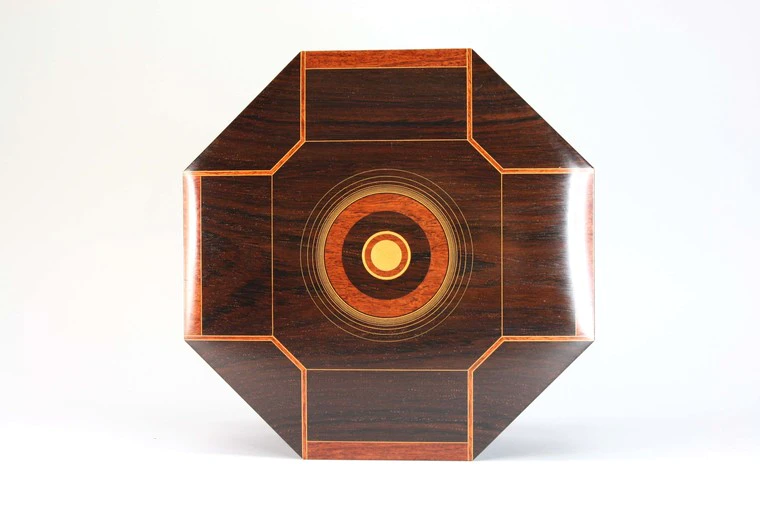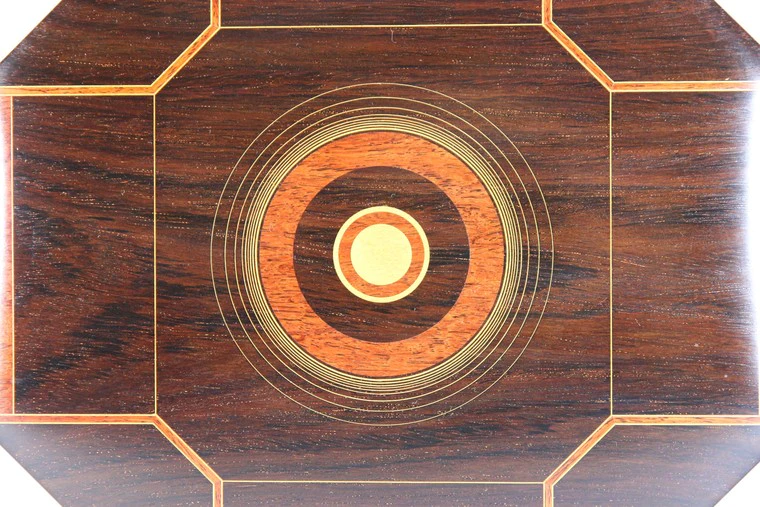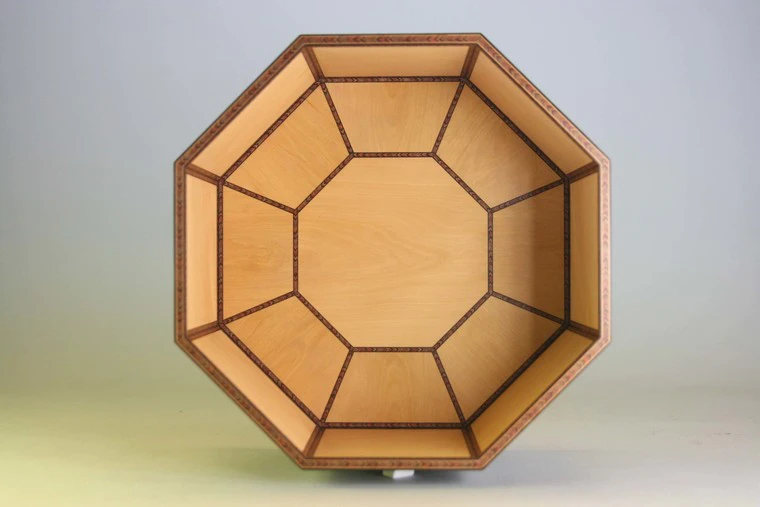Octagonal box of red sandalwood with wood inlay decoration
H 10.5 x W 24 x D 24 cm,Year.2007The prices of the artworks on Gallery Japan are determined by the artists themselves and are published directly on the website.
- according to today's currency rate
- shipping fees not included
Kiun Nitta
1944 -- Wood and Bamboo
- Awarded 5 times at the Japan Kōgei Assoc. Exhibition
- Price Range Please Inquire
About the Artwork
I applied inlays of boxwood and Burmese rosewood on red sandalwood.
On the inside, I pasted a thin board of boxwood and added inlays of herringbone patterned marquetry.
Description
-
CategoryWood and Bamboo
-
MaterialsRed sandalwood
-
DimensionsH 10.5 x W 24 x D 24 cm
-
Year presented2007
-
Production period3 months
-
Paulownia BoxIncluded
-
Artist SignatureSigned (name of artwork, paulownia box)
-
Instructions1. Where to store the artwork
* Avoid storing in a very dry or humid place
* Avoid direct sunlight and ultravioley rays as this may cause discoloring
2. How to care for your artwork
* For pieces finished in wiped urushi, wipe the dirty spots with luke warm water and then wipe with a dry cloth.
<Caution> Do not rub hard. The urushi lacquer may peel off.
* For plain wood surface pieces, only wipe with a dry cloth. Insect wax can be used for polishing.
Techniques Used
Wood joinery
In wood joinery (sashimono), wood boards are cut into panels with care to how the grain patterns will fit together in the final piece. The wooden panels are then cut or carved to create interlocking joints. These joints, which are the key feature of wood joinery, make it possible to connect boards at right angles to produce boxes and other articles. Wood joinery is assembled without the use of nails or any other metal hardware.

The prices of the artworks on Gallery Japan are determined by the artists themselves and are published directly on the website.



